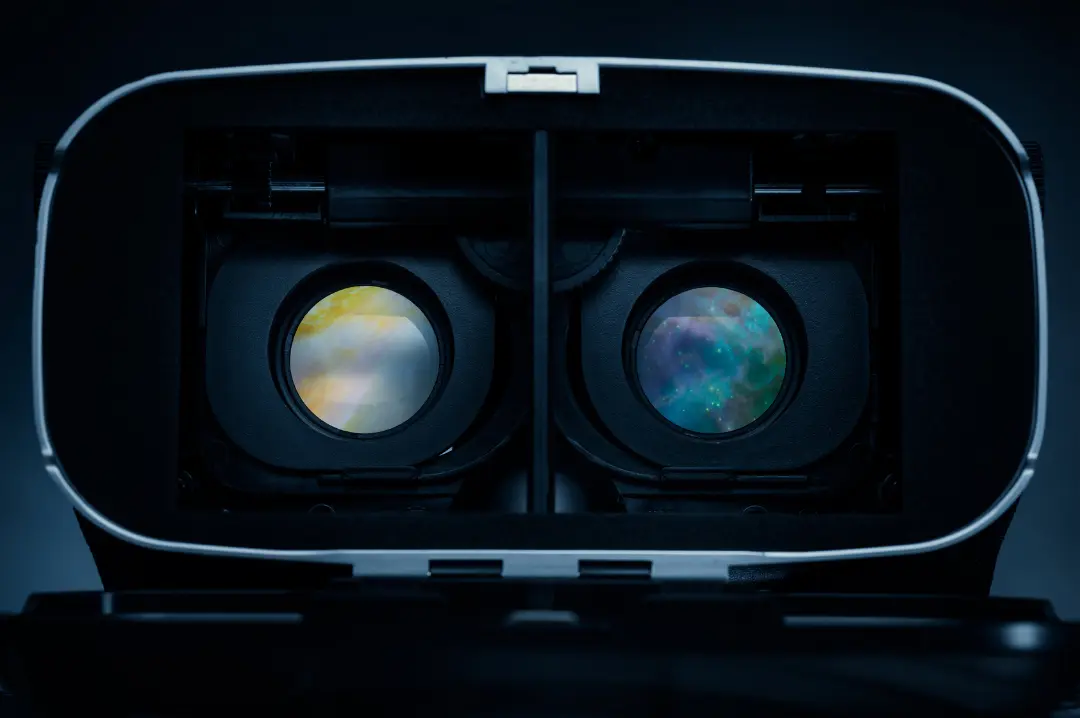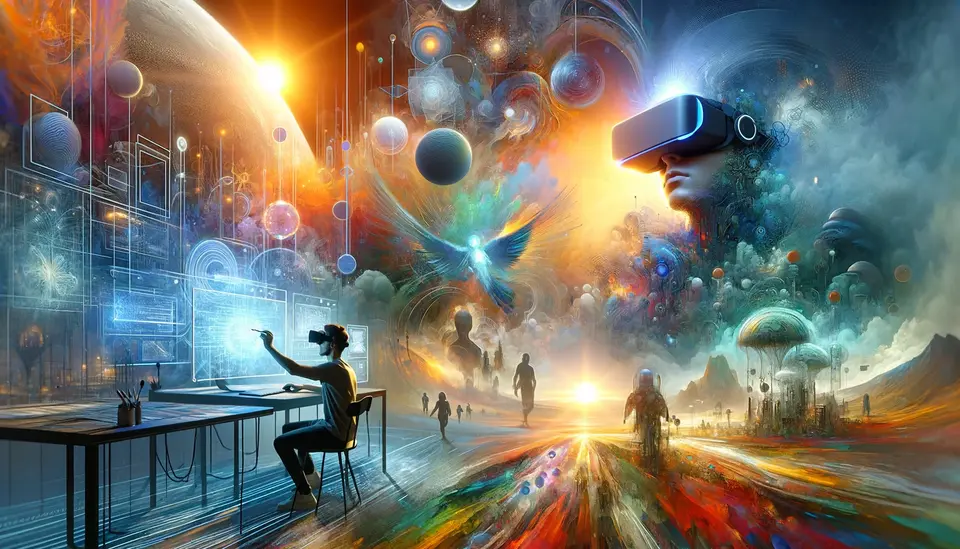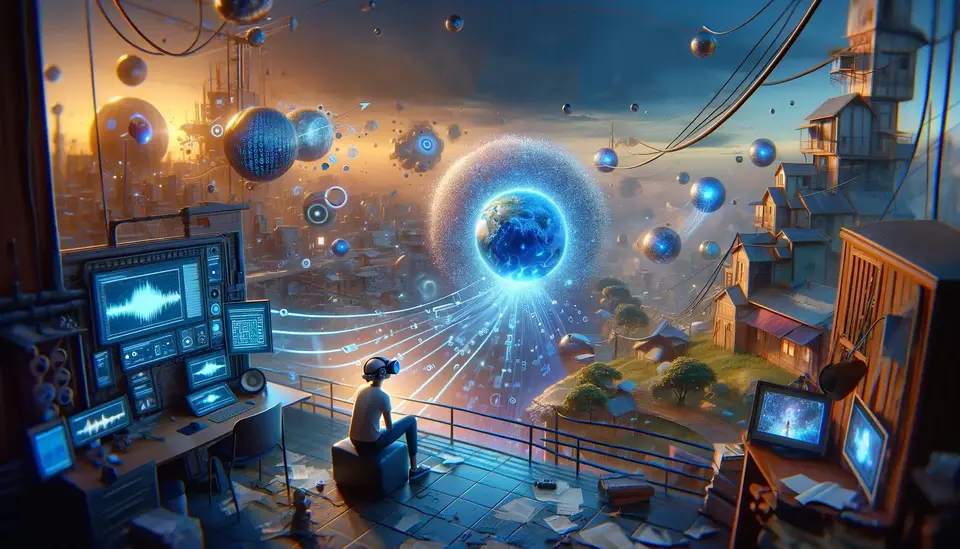History of Virtual Reality (VR)
Posted on May 26, 2023 8 minutes 1647 words
Table of contents
Imagine a world where physical and geographical limitations become irrelevant, where you can interact with a digital universe just as naturally as you would with the real world. This is the promise of virtual reality (VR) - a technology that has captured human imagination for decades and is increasingly becoming a part of our everyday lives. The journey towards achieving this dream has been long and fascinating. Today, let’s delve into the rich history of VR to understand where it all began and where we might be heading.
Early Concepts and First Forays into Virtual Reality
Virtual reality, as we know it today, may seem like a product of contemporary technology, but its roots trace back much further than one might initially think. The concept of an alternate, immersive experience isn’t new, and has been around in various forms for centuries.
In the 19th century, for example, 360-degree art through panoramic murals became popular, intending to fully immerse the viewer in the artwork. This period also witnessed the advent of stereoscopic viewers, a technology based on displaying two slightly different images to each eye, simulating depth and fostering a sense of immersion in the viewer.
However, the true herald of the VR concept in a form recognizable today was the Sensorama, a brainchild of cinematographer Morton Heilig. Developed in the 1950s, the Sensorama was an arcade-style cabinet designed to stimulate all the senses, not just sight and sound. It featured stereoscopic 3D images, stereo sound, wind, and even aromas to provide a multi-sensory simulated reality experience. Heilig later patented a head-mounted display device, called the “Telesphere Mask,” which offered stereoscopic 3D and stereo sound, further enhancing the immersive experience.
The 1960s brought significant advancements with Ivan Sutherland, a prominent figure in the development of computer graphics. Sutherland envisioned a world where “the computer can control the existence of matter,” outlining a concept of a virtual world that could be viewed through a head-mounted display. His concept, known as “The Ultimate Display,” marked the beginning of the idea of modern VR. Along with his student Bob Sproull, Sutherland created the first virtual reality head-mounted display system, which they humorously dubbed “Sword of Damocles” due to its intimidating overhead suspension system.
The Birth of Modern Virtual Reality
The 1980s and 1990s witnessed a slew of technological advancements that brought virtual reality closer to the form we are familiar with today. Many of these innovations emerged from the video game industry and the military, where there was a keen interest in creating and interacting with digital environments.
The term “virtual reality,” as we use it today, was popularized by Jaron Lanier, a computer scientist and musician. In 1985, he founded VPL Research, a company dedicated to the development of VR technologies. VPL Research pioneered several devices, including the DataGlove, which tracked hand movements in VR, and the EyePhone, an HMD that tracked head movements to provide a more immersive experience. While these products had limited commercial success due to their high cost, they laid the groundwork for future VR developments.
The 1990s marked several significant commercial attempts to bring VR to the consumer market. The Virtuality Group introduced stand-alone VR arcade machines that featured immersive multiplayer games. These machines allowed players to explore virtual worlds using a VR headset and joystick controls, offering one of the first instances of consumer-facing VR experiences.
However, the most well-known attempt to bring VR into the home came from the video game giant Nintendo. In 1995, Nintendo released the Virtual Boy, a table-top video game console capable of displaying “true 3D graphics” out of the box. However, the device fell short of creating a convincing VR experience. It was infamous for causing discomfort, and its monochrome display (a sea of red lines) was a far cry from the colorful virtual worlds that people imagined.
In this period, significant strides were also made in the field of VR research, supported by governmental organizations. For instance, the U.S. military invested heavily in VR and augmented reality (AR) technologies, leading to the development of systems like the Battlefield Augmented Reality System (BARS) - an outdoor AR system designed to provide soldiers with more information about their environments.
While these early efforts faced significant challenges, including crude graphics, high latency, lack of compelling content, and high costs, they played an integral role in demonstrating VR’s potential and setting the stage for the significant advancements that the 21st century would bring.
The Resurgence of Virtual Reality
Despite the early excitement around virtual reality in the late 20th century, technical limitations and high costs led to a period of disillusionment. However, by the turn of the century, the rapid advancement of technology reignited interest in VR.
In the early 2000s, researchers continued to explore the possibilities of VR in various fields like therapy and rehabilitation, training and education, design, and more. While VR was still costly and far from mainstream, these explorations started to reveal the true potential of VR beyond entertainment.
A significant turning point came in 2012 with the launch of a Kickstarter campaign by a startup called Oculus VR. The campaign aimed to fund the development of the Oculus Rift, a high-performance VR headset affordable enough for the average consumer. The campaign was a tremendous success, raising nearly $2.5 million and generating widespread excitement about the possibilities of VR.
The Rift’s eventual release in 2016 marked a significant moment in VR history. It offered a high field of view, high refresh rate, and low latency, providing a significantly more immersive and comfortable experience than previous consumer VR headsets. The Rift also introduced positional tracking, allowing users to move naturally within the virtual space, enhancing the sense of presence.
In 2014, another significant development was the launch of Google Cardboard, a simple, low-cost VR viewer made from cardboard. This initiative aimed to make VR accessible to anyone with a smartphone, sparking a wave of interest in mobile VR. Google later built on this with the more robust Daydream platform.
These and other advancements revitalized the VR industry, sparking a new wave of hardware and software development. Companies like HTC and Sony entered the VR market with their headsets - the HTC Vive and PlayStation VR, respectively - each offering their unique contributions to the VR landscape.
Present State of Virtual Reality
Today, we are experiencing a rapidly evolving landscape of virtual reality technology. We have moved far beyond the crude, pixelated graphics and discomfort-inducing experiences of the past. Modern VR systems offer high-resolution displays, precise motion tracking, and increasingly intuitive interaction methods.
The leading VR headset manufacturers continue to innovate at a rapid pace. Oculus, now a part of Meta Platforms (formerly Facebook), released the Oculus Quest in 2019 and its successor, the Oculus Quest 2, in 2020. These devices are entirely standalone, requiring no external hardware for processing, which significantly reduces the cost and complexity barriers to VR.
Meanwhile, Valve’s Index headset targets the high-end PC market, offering impressively high fidelity experiences with features like per-eye resolution, a wide field of view, and a high refresh rate for smoother, more realistic visuals.
On the software side, we’re seeing an expansion of VR applications. Gaming remains a significant driver of VR adoption, with titles like “Beat Saber,” “Half-Life: Alyx,” and “The Walking Dead: Saints & Sinners” showcasing the unique experiences VR can offer.
However, VR’s potential extends far beyond gaming. Social VR platforms, such as VRChat and Rec Room, are seeing growing popularity, providing a new way for people to interact virtually. In the enterprise sector, VR is used for training simulations, product design, virtual meetings, and more. In healthcare, VR can aid in various treatments and therapies, such as pain management and exposure therapy for phobias.
Moreover, during the COVID-19 pandemic, VR proved to be a valuable tool for remote education, fitness, and social interaction, highlighting its potential in a world increasingly comfortable with remote and digital experiences.
In the cultural sphere, artists and musicians are exploring VR as a new medium for expression. For example, virtual concerts in platforms like Fortnite and Roblox have attracted millions of attendees, and artists are creating VR-specific artworks viewable in platforms like Google’s Tilt Brush.
Indeed, as we look around the current state of virtual reality, it’s clear that VR’s application is broadening, its technology is maturing, and its user base is expanding. We’re in the midst of a fascinating period of exploration and experimentation, as we collectively figure out how best to use this powerful new medium.
The Future of Virtual Reality
The future of VR looks bright and is only limited by our imagination. Some anticipate a move towards “full-dive” VR, which would involve a total sensory experience and possibly even interaction with the human nervous system for a truly immersive experience.
The integration of VR with other emerging technologies like AI could lead to more personalized and engaging VR experiences. Blockchain could facilitate virtual economies in VR spaces, and advancements in haptics could make virtual objects feel as real as their physical counterparts.
Beyond entertainment, VR has enormous potential to transform education, healthcare, and remote work. Imagine attending a class or a business meeting in a virtual space, or a doctor performing a complex surgical procedure with the aid of VR.
Conclusion
From the early concepts of immersive experiences to the sophisticated VR systems of today, the journey of virtual reality has been driven by the human desire to explore new worlds and experience the impossible. As VR continues to evolve and become more integrated into our lives, we stand on the cusp of a new era - an era where the virtual and the real world may become indistinguishable, opening up endless possibilities. One thing is certain - VR is not just a technological innovation. It is a paradigm shift, and it’s only just beginning.








